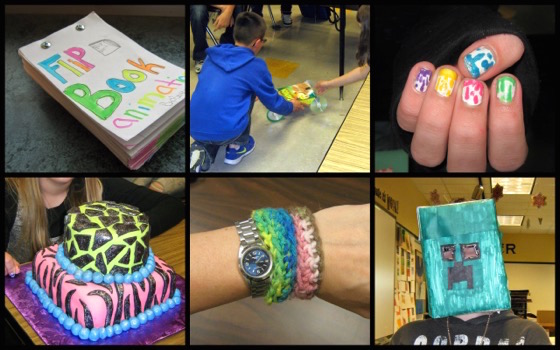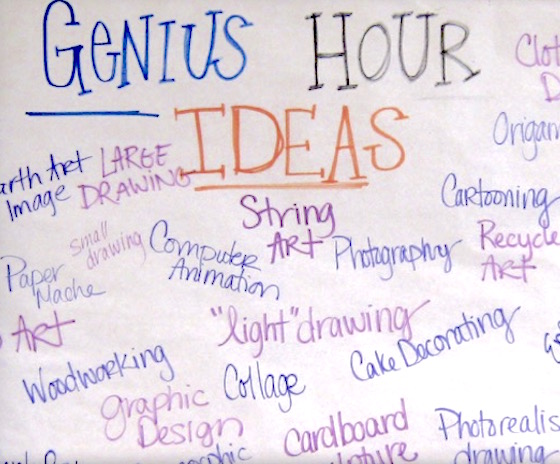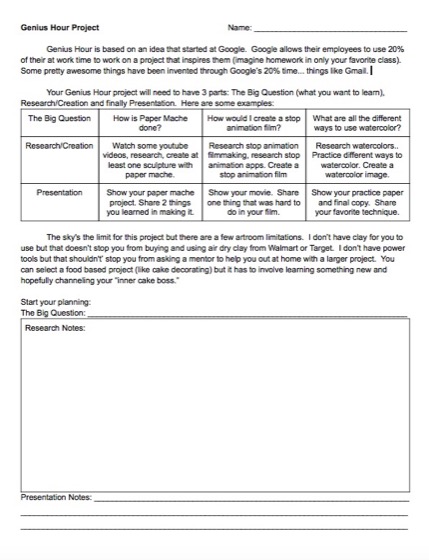Facing the last lesson of the year is tough. You want your students engaged and learning right up to the last bell, but you also need time to assess their work. In the past, I have always used the last class as the “hand back all the artwork” class. The problem was that 3 kids were handing stuff out while 20+ kids were talking or wandering. Plus, there was always someone wanting to turn in one last project. As a teacher, that left me feeling CRAZY at the end of the school year.
Two years ago, I took a baby step toward saving my sanity. It started with a trip to the NAEA convention in Fort Worth. While we were there, the Dallas Museum of Art had a show up that focused on the “art of chairs.” It was pretty cool and it inspired me to challenge my students to create their own chairs over spring break. They could draw them, paint them, transform an old chair, build a new chair, etc. It just had to be something to do with a chair. The students loved it and I learned more about some of my students with that one project than I had in two years of teaching them.
Last year, I took the concept even further and allowed my students to choose their last project of the year. It was GENIUS!

The idea is based on both Google’s 20% time and the resulting Genius Hour idea. Both of these concepts allow people a portion of their work time to work on passion projects — projects separate from their day-to-day tasks. You can learn more at the Genius Hour Website and the Genius Hour Wiki.
I introduced the project 3 class periods before the end of the year. Since I see my students once per week all year long, they had seven days between classes to work on the different parts of the project.
I chose to break the project down for my students into 3 different sections, one for each class period we had left: Researching, Creating, and Sharing.
1. Researching

After I introduced the idea to my students, we spent the first class period working on research. We brainstormed and answered a lot of questions, making sure every student left with part one ready to go. Students were asked, “What is one thing you want to learn about in regards to art?”
2. Creating
During the second week, and the second class period of the project, students worked during class. They had to come with their research ready to go so they could create. Some students had started working at home and continued to do so into the next week. The few students who were doing “big projects” at home helped me hand back artwork and clean up the art room.
3. Sharing
The last class period was presentation time. The presentations were pretty low-key. Students had to tell their classmates what they had wanted to learn, how they learned about it, what their biggest surprise or challenge was and then show what they created.
I had students teaching us about cake decorating, flip book animation, woodworking, painting techniques, origami, melted crayon pieces, fashion design and so much more. Of course, I had a few students who “didn’t have anything” but even they were able to present about what they attempted and the lessons they learned.
If you’d like to try this project in your art room, you can check out the planning sheet I use with students below.

As the last bell rang, students had a piece of artwork that they were very much invested in to take home. I had all my grading done, as I marked the students as they presented. We spent the last class period of the year learning and enjoying one another’s company. It doesn’t get much better than that!
Have you ever tackled a Genius Hour project with your students?
If your district gave you 20% of your time to work on a passion project what would it be?
Magazine articles and podcasts are opinions of professional education contributors and do not necessarily represent the position of the Art of Education University (AOEU) or its academic offerings. Contributors use terms in the way they are most often talked about in the scope of their educational experiences.




